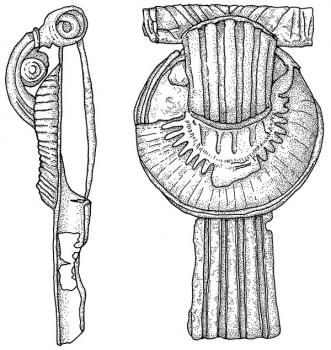American Journal of Archaeology | The Journal of the Archaeological Institute of America
You are here
Characterizing Roman Artifacts for Investigating Gendered Practices in Contexts Without Sexed Bodies
January 2015 (119.1)
Characterizing Roman Artifacts for Investigating Gendered Practices in Contexts Without Sexed Bodies
This article concerns the characterization of Roman artifacts so that they can play a greater role in gendered approaches to Roman sites—sites that constitute lived spaces but lack actual references to sexed bodies. It commences with a brief discussion on gendered approaches in the two main strands of Roman archaeology—classical and provincial. Within the differing frameworks of the wider disciplines of classics and archaeology, both strands focus on contexts with sexed bodies—burials, figurative representation, and inscriptions. The discussion serves as a background for more integrated and more interrogative approaches to relationships between Roman artifacts and gendered practices, approaches that aim to develop interpretative tools for investigating social practice in contexts where no representational or biologically sexed bodies are evident. Three types of artifacts—brooches, glass bottles, and needles—are used to demonstrate how differing degrees of gender associations of artifacts and artifact assemblages can provide insights into gender relationships in settlement contexts. These insights in turn contribute to better understandings of gendered sociospatial practices across the Roman world.
Characterizing Roman Artifacts to Investigate Gendered Practices in Contexts Without Sexed Bodies
By Penelope M. Allison
American Journal of Archaeology Vol. 119, No. 1 (January 2015), pp. 103–123
DOI: 10.3764/aja.119.1.0103
© 2015 Archaeological Institute of America



Add new comment